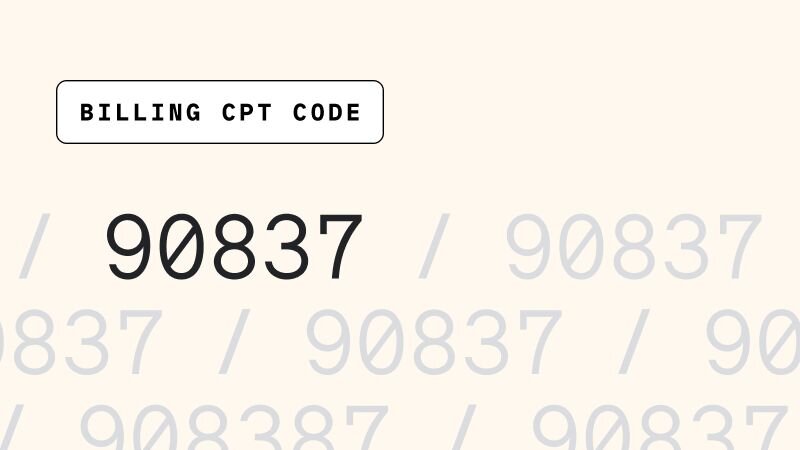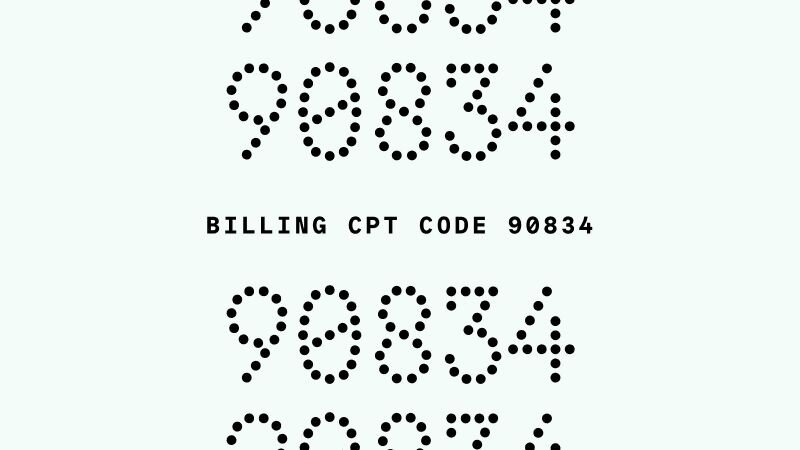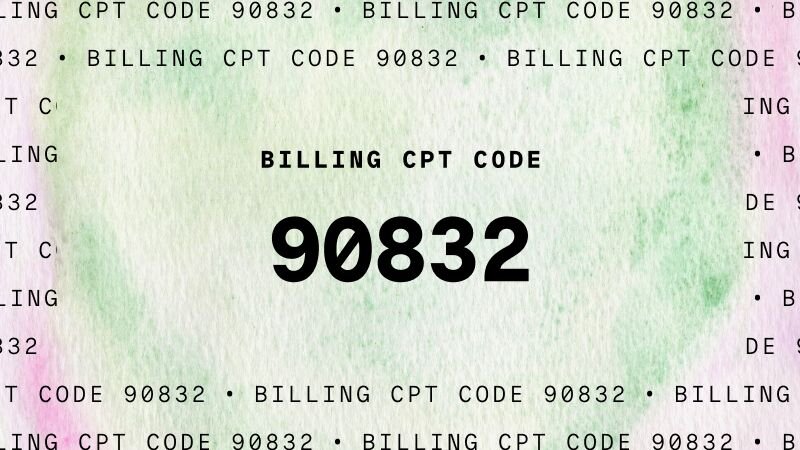
How to use CPT code 90837
The 90837 CPT code is often understood to be the standard of a therapy session among providers. However, insurers have a tendency to flag 90837 more frequently than other codes.

CPT codes 90839 and 90840 both reflect treatment for a crisis, but represent different time frames.
Your work as a therapist isn’t limited to routine therapy sessions. If a client is experiencing thoughts of self-harm or suicidal ideation, for example, you may be tasked with assessing and diffusing the crisis. You may provide psychotherapy as an intervention, but in these emergent scenarios, your work will probably be more extensive and intense.
Understanding the ins and outs of how to bill insurance when supporting a client through a crisis can help ensure you get reimbursed for the valuable work you do. Read on to learn more about two important codes you should be familiar with when it comes to a client in crisis.
When you’re providing a higher level of care, you should bill your services accordingly. If you assess and treat a client in crisis, you may use CPT (Current Procedural Terminology) code 90389, or psychotherapy for crisis.
Psychotherapy for crisis codes can be used when you conduct an urgent assessment and history of a crisis state, a mental status exam, and a disposition. The treatment for 90389 includes psychotherapy, mobilization of resources to defuse the crisis and restore safety, and implementation of psychotherapeutic interventions to minimize the potential for psychological trauma.
This code, specifically, is used for the 30–74 minutes of crisis therapy. It can’t be used in conjunction with other psychotherapy codes, but you may add on code 90840 if your work extends beyond 74 minutes.
In your documentation, make sure to clearly document the assessment of risk, mental status, any medical concerns, what resources you mobilized to defuse the crisis, how safety was restored, and the pertinent safety plan going forward.
CPT code 90840, another psychotherapy for crisis codes, involves the same therapeutic services but is billed for each 30 minutes of time you work. If a psychotherapy for crisis session exceeds 74 minutes, a unit of 90840 may be added for each additional 30 minutes. 90840 can’t be used independently and can only be billed with 90839.
No additional documentation is required when you use CPT code 90840, but you’ll need to provide clear accounting for the time spent in session.
It’s important to use the code that most accurately reflects the time you spent with the patient to treat their condition, and ensure that documentation for the session supports the chosen code.
CPT codes 90839 and 90840 reflect the same service, but different time frames. These codes are used to report the total duration of face to face time spent with the patient or family, and the provider must devote immediate attention to the patient for the entire amount of time.
Here are some examples of coding that correlates with different amounts of face-to-face time providing crisis services:
10 minute session: neither code can be used
30 minutes: 90839 (minimum time for this code)
74 minutes: 90839 (maximum time for this code to be used alone)
75 minutes: 90839, +90840 (minimum time for 90840 add on code)
104 minutes (1h + 30m +14m): 90839, +90840 (maximum time before an addition unit of 90840 is used)
105 minutes (1h + 30m +15m): 90839, +90840, +90840 (minimum time for an additional 90840 add on code)
It may be difficult to determine whether a crisis code is appropriate. Typically, the presenting problem is life threatening or complex and requires immediate attention to a client experiencing significant distress. Examples include:
Because you’ll probably spend more time and energy assessing and treating a client in crisis, you’ll likely be reimbursed at a higher rate. Reimbursement rates for sessions billed with 90839 and 90840 will vary depending on the plan, your contract, your location, and your license type.
This document is intended for educational purposes only. It is designed to facilitate compliance with payer requirements and applicable law, but please note that the applicable laws and requirements vary from payer to payer and state to state. Please check with your legal counsel or state licensing board for specific requirements.

The 90837 CPT code is often understood to be the standard of a therapy session among providers. However, insurers have a tendency to flag 90837 more frequently than other codes.

The “45 minute” session is a core element of mental health care, so it’s vital that every provider knows how to apply the 90834 code to their work.

If your client demonstrates a clinical need for shorter therapy sessions — or you need to end a session earlier than planned — 90832 might be the right way to bill.